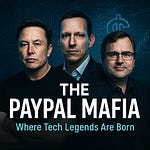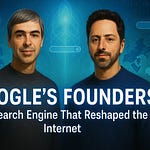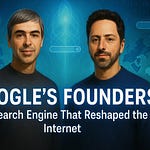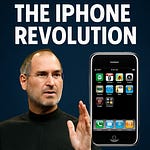PART 6: THE FIRST HIRES AND EARLY CULTURE
As word spread about Google, Larry and Sergey faced a new problem—scale. They couldn’t do it all alone. It was time to build a team.
But these weren’t going to be ordinary hires. The duo had a golden rule:
“Only hire people smarter than us.”
And so they began combing through Stanford’s elite.
One of their first hires was Craig Silverstein, a fellow PhD student who became employee #1. He recalled working on Google’s infrastructure using “duct tape and caffeine.” But the spirit was infectious.
Larry and Sergey didn’t believe in formalities. Meetings were often walking conversations. Code reviews happened on whiteboards. If an idea made sense, it didn’t matter if it came from an intern or a PhD.
They baked in a culture of:
Intellectual freedom
Data-driven decisions
Strong opinions, loosely held
Every engineer was encouraged to challenge assumptions—even Larry and Sergey’s.
One story goes that during a team meeting, a young engineer questioned Larry’s code implementation. Instead of shutting him down, Larry paused, smiled, and said,
“You’re right. Let’s do it your way.”
This was different. It was Google.
PART 7: BREAKING THROUGH – THE FIRST MILLION USERS
By the end of 1999, Google’s daily search volume was exploding.
Users were discovering the magic: it was fast, it was relevant, and it was clean.
There were no pop-ups. No flashing banners. Just a white page with a colorful logo and a blinking cursor inviting you to “search.”
Unlike Yahoo or Lycos, which bombarded users with news, ads, horoscopes, and weather, Google made a silent promise:
“You came here for answers. Let us give them to you.”
Word of mouth did the rest. In tech forums, email chains, and college campuses, people started recommending Google.
By mid-2000, they had crossed one million daily searches.
That’s when the big money came knocking.
Sequoia Capital and Kleiner Perkins, two of the most respected VC firms in Silicon Valley, agreed to co-invest. They poured in $25 million. With one condition:
Larry and Sergey had to hire an experienced CEO.
This created some tension. The founders were young—brilliant, yes, but untested. They reluctantly agreed and began the hunt.
Eventually, they hired Eric Schmidt, a seasoned executive from Novell.
It was an odd match:
Eric wore suits; Larry and Sergey wore jeans
Eric believed in org charts; they believed in chaos
Eric scheduled meetings; they avoided calendars
But over time, the trio found a rhythm. Larry was the visionary, Sergey the product hacker, and Eric the adult in the room.
And together, they scaled.
PART 8: THE ADVERTISING DEBATE – STICKING TO VALUES
As Google grew, a crucial question emerged:
How would they make money?
Search was free. Users were flocking. But servers weren’t cheap. The burn rate was rising.
The easy answer was banner ads. Everyone was doing it. Yahoo was thriving on flashy ads. So were portals and media sites.
But Larry and Sergey hated the idea.
They believed ads polluted the user experience. They feared ads would corrupt results—“Search must be objective,” they insisted.
So instead of traditional ads, they developed a radical new concept:
AdWords – text-based ads that appeared based on your search intent.
No pop-ups. No images. Just small, relevant suggestions. And you only paid when someone clicked.
It was subtle. Elegant. Respectful of user attention.
Investors were skeptical. Would people click on plain text? Would businesses buy in?
The answer: yes.
AdWords took off. Click-through rates were 10x higher than traditional ads. Small businesses now had a way to reach global audiences without huge budgets.
By 2002, Google was profitable. But they didn’t stop there.
They added analytics. Refined targeting. And made ads contextual.
It wasn’t just a business model. It was a revolution in digital advertising.
PART 9: THE “DON’T BE EVIL” ERA
Around this time, Google codified its internal mantra:
“Don’t be evil.”
It wasn’t just a PR slogan. It was a cultural compass. Employees were encouraged to speak up if a project or decision felt ethically grey.
One such story comes from Gmail’s launch.
In 2004, Google announced it would give users 1GB of email storage—20x more than competitors—for free. But there was a catch: Google would scan emails (automatically, not manually) to serve relevant ads.
Privacy advocates went wild.
“Is Google reading our mail?” they screamed.
The backlash was real. Media criticism. Legal threats. Even protests.
Inside Google, the debate raged. Some employees argued it crossed a line. Others said it was no different from how spam filters worked.
Larry and Sergey held firm. They improved transparency. Gave users control. Explained that algorithms, not humans, scanned content.
Over time, Gmail became a success story. But it marked a turning point.
Google was no longer a scrappy underdog. It was a powerful gatekeeper of the internet.
And with power came responsibility—and scrutiny.
✅ Would you like me to continue with Part 3 of the story?
It will include:
Google’s IPO journey
Competition with Microsoft
The launch of Maps, YouTube, and Android
Founders stepping back and handing over the reins
Comment Below and hear to final part of the story










